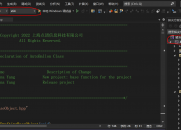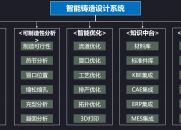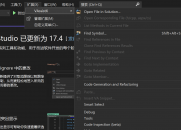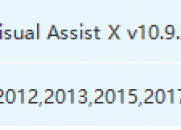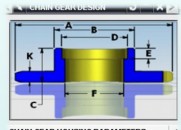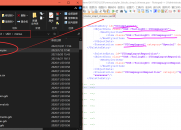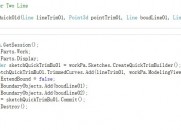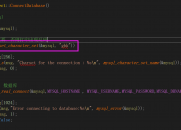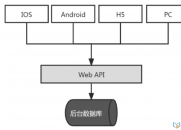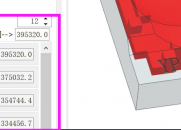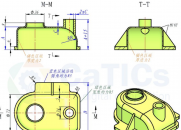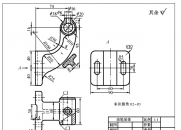|
|
请使用QQ关联注册PLM之家,学习更多关于内容,更多精彩原创视频供你学习!
您需要 登录 才可以下载或查看,没有账号?注册

x
- H/ H3 J# r4 n
171. 更改运行调度程序的操作系统用户后,populatefsc 中止在 TRANSLATIN状态 " C1 F& d: \# G5 `$ g' p
, ]9 Z& j5 p6 W' W" ~+ b w问题 7 u/ o$ | O% ^
默认情况下,该模块使用 2 层的自动登录,如果操作系统用户不是 Teamcenter 用户,该( d- Z3 U0 x* s( f- X' d& T
模块中的功能无法登录 $ t& Y0 D' |, k- ^% t3 F+ F
9 ^" ]$ k) M' i* T& {5 h' N
ERROR - 2018/11/29-10:51:46.962 UTC - NoId - 515143: The login attempt failed: either the
# t1 u8 M7 N9 i. U0 o8 c Iuser ID or the password is invalid. : ~; M( N$ L' v3 y% Z
/ k6 C" A) A, a* Q8 ~9 a7 L; ^
方法
8 A |% R9 I6 n+ H修改 populatefsc 脚本,增加登录信息
M6 l. _: E. z2 |在 populatefsc.bat 文件中,在 TC_ROOT 和 TC_DATA 的设定后增加如下行
; u8 G% ?% L# J) m5 l9 q: ?3 t+ \& lset TC_DBA_USER=infodba 4 I5 r4 P1 q8 Y6 q* l; g1 H
- ]0 A, U* P8 p9 }3 H+ k0 Z在 populatefsc.pl 中 : $ }' G( G3 i. E+ v. Y0 s
$ A U7 ?* U- `/ v1 _
在 runPLMXMLExport 子程序下增加红色标记的代码
: z1 g+ F% `$ t/ o7 k3 V! P
/ K, j& {: f i! C+ e) A% \# This will be the full path to the executable. * u6 T+ f" |/ w2 ^5 ~
my $exe_path= "$ENV{'TC_BIN'}${dir_separator}${exe_name}${exe_suffix}"; & p1 D$ |/ k: Y- }& [
my $tcdbauser= "$ENV{'TC_DBA_USER'}";
8 ]& \4 V7 x/ d* b& ^' J' kmy $pwdfile= "$ENV{'TC_ROOT'}${dir_separator}security${dir_separator}server_infodba.pwf";
- ^2 L: C3 D$ d# Make sure we can find what we are executing. 7 D) n6 F+ W5 E+ D, k$ x( A
die "The ${exe_name} executable was not found at the following location:
& P6 U, v: W9 y0 f) |${exe_path}\n" unless -x ${exe_path};
$ s- j$ z9 W4 K; l5 e# i8 D8 w/ a
/ b) F- a$ k9 b$ _. @# Start building the command line.
: {0 ]9 N# b3 |* F; w( Pmy @args= ( $exe_path, '-transfermode=ConfiguredDataExportDefault' );
( M2 g: y1 q3 \ I! c* b- G% L1 I# H
# Take care of possible empty spaces in the argument values , Y2 _8 ~* z3 S/ s8 G# T
my $outputFileStr = $hashRef->{'output_file'};
1 E+ p7 K0 i% r$outputFileStr = handleEmptySpaceInPath($outputFileStr); * G- X$ s% C( a- Y2 p7 V4 d# J. p) ~
my $scoUid = $hashRef->{'uid'};
; x2 Z w2 o; ?$scoUid = handleEmptySpaceInPath($scoUid);
: z w$ r9 R+ ?% u; z1 ?3 Q$ H
# Add the extra options. % t2 U# P+ f/ i( }* G% h
addOption(\@args, '-xml_file=', $outputFileStr, 1);
" E d* N7 m7 t8 |# ]" paddOption(\@args, '-uid=', $scoUid, 1); - d9 R" C0 F* `4 X9 a: J
addOption(\@args, '-u=', $tcdbauser, 1);
; t/ K2 p' e' c0 K! [addOption(\@args, '-pf=', $pwdfile, 1);
0 _0 l) }; O, _. Q( a, O# |: ^
: u: F: z0 S- {1 f6 ]: A' `: c在 runLoadFscCache 子程序下增加红色标记的代码 5 F7 ?. s0 S( G/ s
c7 }+ m0 n4 Q* _# This will be the full path to the executable. 6 x; q1 @+ p5 d7 t: j q6 Z6 o$ l
my $exe_path= "$ENV{'TC_BIN'}${dir_separator}${exe_name}${exe_suffix}";
+ E$ i% \) l+ D$ Y; D; ]' R7 S) {* _) X% J
my $tcdbauser= "$ENV{'TC_DBA_USER'}"; 1 i+ }! w0 t3 T5 _+ e- d( s T
my $pwdfile= "$ENV{'TC_ROOT'}${dir_separator}security${dir_separator}server_infodba.pwf";
9 ~; u$ P$ k2 l6 Y# Make sure we can find what we are executing. & L% _5 M" F2 Z7 L9 b, J& m
die "The ${exe_name} executable was not found at the following location: 9 s# r! l( e, M2 Z0 E
${exe_path}\n" unless -x ${exe_path}; / _% B5 V; c# u7 l1 w! [; \* I
8 i$ D1 n5 {# j* V6 h& h7 A' _
# Figure out output information from command line input % t5 s8 U! k4 y% s0 v
my $outputFileStr = $hashRef->{'output_file'}; : k; B; \9 U4 e. Y$ j1 J5 v/ y
my $fscUri = $hashRef->{'targets'}; 0 T2 h; B; f/ B7 D4 U
/ `( d; y. s- o& y) v" I
# Check possible empty space in the string
: F" l% n6 l0 t3 j7 z5 z$outputFileStr= handleEmptySpaceInPath($outputFileStr);
6 I g2 C( b# ?/ O- i! W( t8 T$fscUri = handleEmptySpaceInPath($fscUri);
: ]$ b. D8 H" t1 X6 P/ j: D6 [. [4 {* ^8 c9 W! y( k+ d7 K
# Add the extra options.
9 k+ b, O; g2 e( W, }my @args= ( $exe_path, '-f=load' ); : i1 t7 b" t( e7 M8 F. q
addOption(\@args, '-plmxml=', $outputFileStr, 1); 2 y( u% L& v. b
addOption(\@args, '-fsctargets=', $fscUri, 1); * ^' `+ o# s- n V8 o& S# f
addOption(\@args, '-u=', $tcdbauser, 1); * J+ Q0 W G o9 |7 O( l7 Z* D- s
addOption(\@args, '-pf=', $pwdfile, 1); 0 d; A& }! R W% j) D) w9 J) a7 U
) h1 W9 S0 ~5 E0 l, ]2 v& R
' X6 ~' q' o6 P C; J# w
+ \7 [9 x& @9 W/ k
|
|


